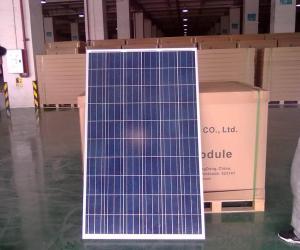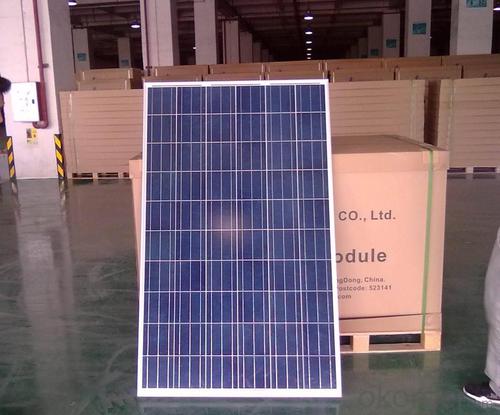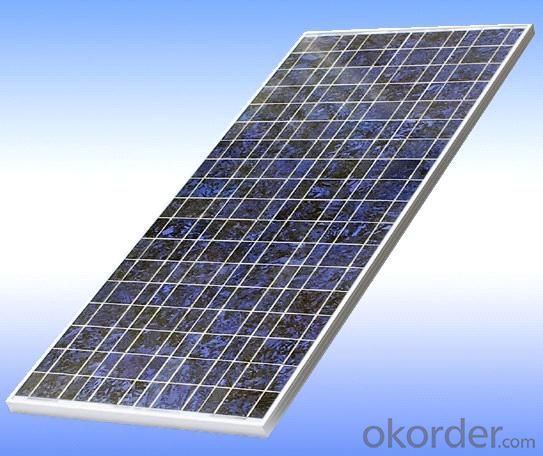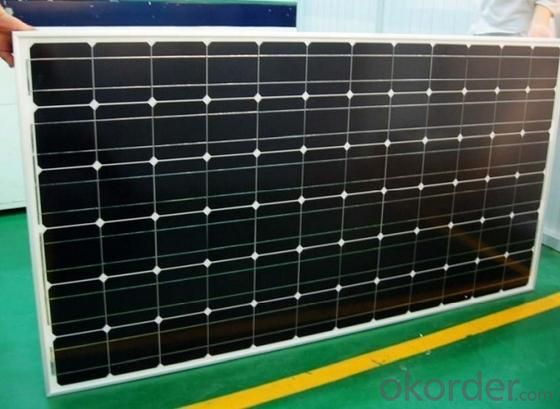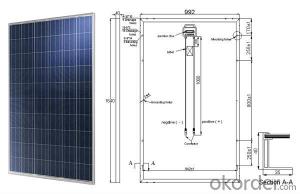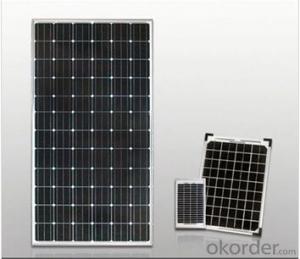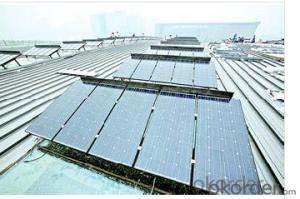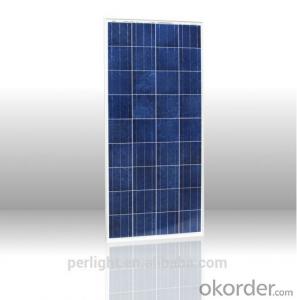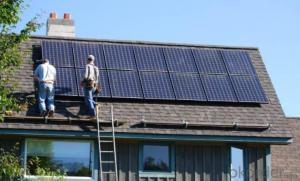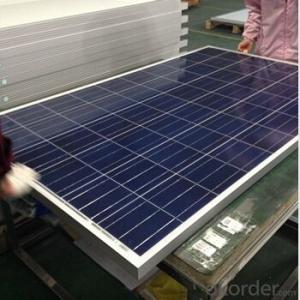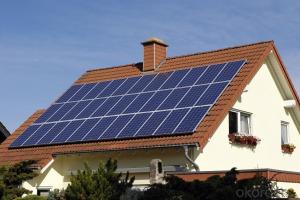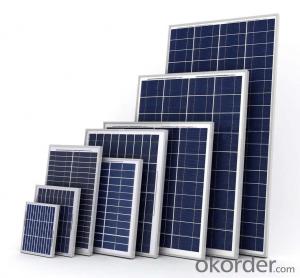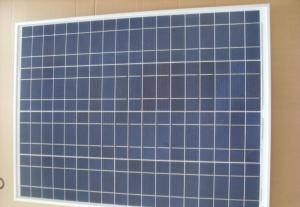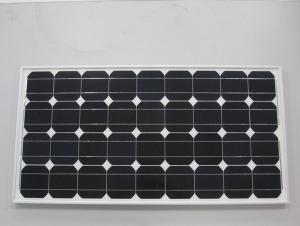CE and TUV Approved High Efficiency 80W Poly Solar Panels - Solar Panels Madison WI
- Loading Port:
- Shanghai
- Payment Terms:
- TT OR LC
- Min Order Qty:
- 10000 watt
- Supply Capability:
- 20000000 watt/month
OKorder Service Pledge
OKorder Financial Service
You Might Also Like
Specification
Product Description:
1.Structure of Polycrystalline Silicon Solar Panel
I. High efficiency crystalline silicon solar cell. Even if under the weak light, the solar module can produce maximum power output.
II. Tempered glass (toughened glass): Anti-reflecting coating and high transmission rate glass increase the power output and mechanical strength of solar module.
III. EVA and TPT: Using high quality EVA and TPT to prevent destroying and water.
IV. AI frame: Without screw, rner connection. 6 holes on the frame can be installed easily.
V. Junction box: Multi function junction box with water proof.
VI. Long lifetime: ≥25 years; Less power decrease.
VII. Good performance of preventing from atrocious weather such as wind and hails.
VIII. Resisting moisture and etching effectively, not effected by geology.
IX. The certificate issued by international authority: UL, TUV, IEC, CE.
2.Characteristics
1)Manufactured according to international quality and Environment Management
System (ISO9001, ISO14001)
2)High efficiency crystalline silicon solar cells
3)High transmission Iow iron tempered glass, strong mechanical resistance
4)Anti-ageing EVA and excellent anti-climate back sheet
5)Anodized aluminum frame improves load resistance capabilities for heavy wind loads.
6)Standard waterproof junction box
7)High endurance to different weather
8)Good and friendly package with less transportation and storage space.
3.Warranty
1)10 years limited manufacturing warranty
2)10 years for 90% of warranted minimum power
3)25 years for 80% of warranted minimum power
4.The Pictures of Solar Panels
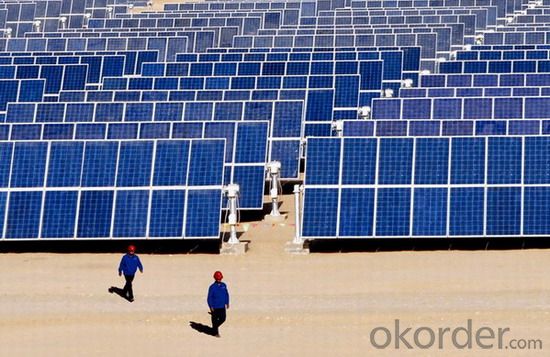
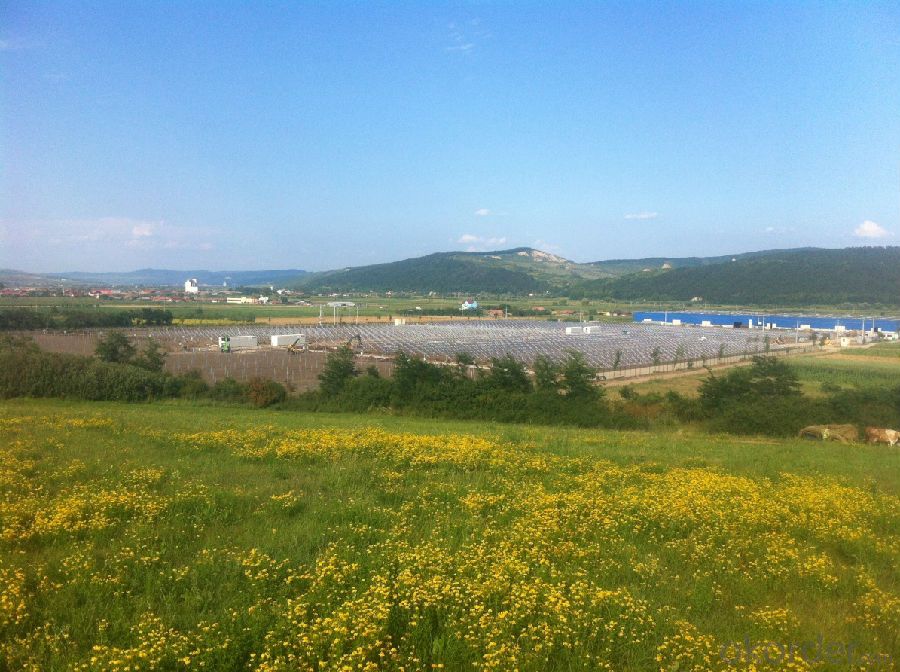
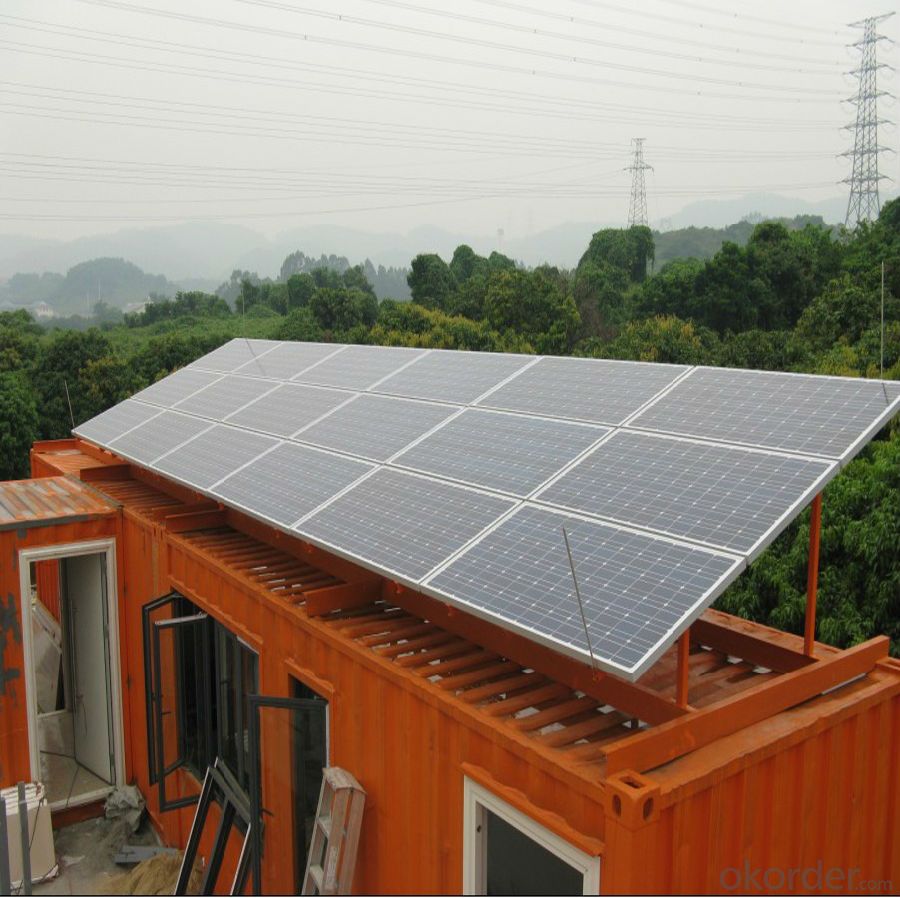
5. Production Flow
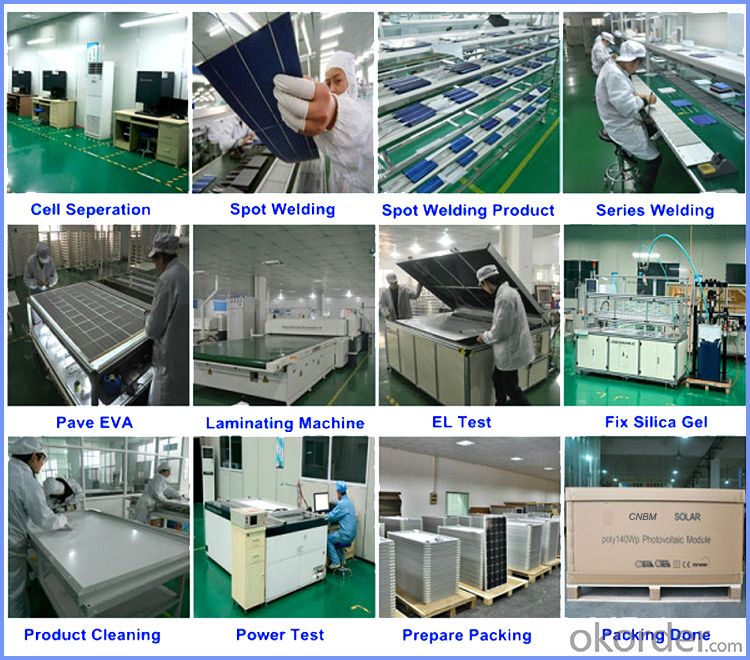
6. Packing Details
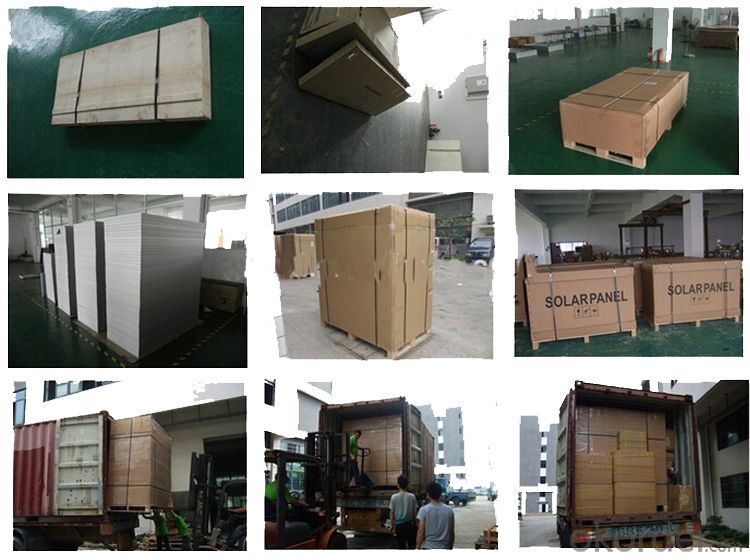
7. Use For
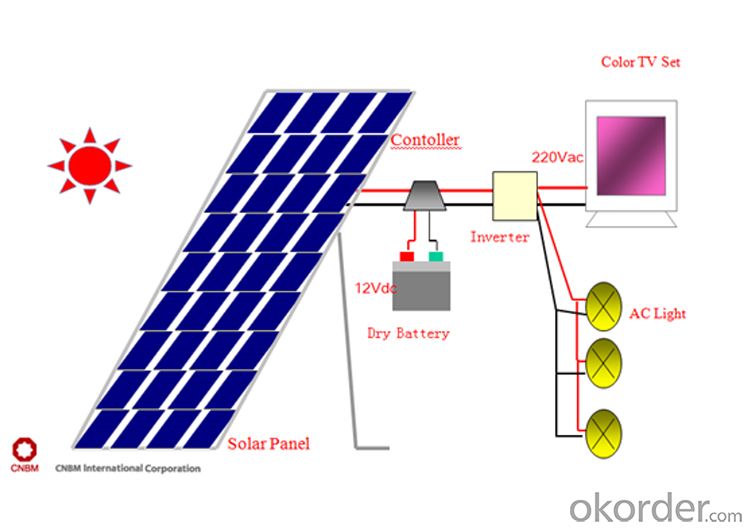
- Q: I am curious about how much of the energy that a solar panel of a given size and capacity will produce in it's lifetime, and what fraction of that energy was required to produce it in the first place?
- The attached link is to an article from the 200 Home Power magazine. In that article the energy payback was found to be between 2 and 4 years. Newer panels are more efficient primarily because the silicon wafers used today are thinner. The silicon cell embodies most of the energy required to make a solar panel. Today most solar panels will produce the amount of energy required to manufacture them in between about 9 months and 2 years depending upon the specific technology used to make it. Solar panels are expected to produce energy for between 30 and 50 years. Therefore it takes around 5% of their total energy production to produce them. Note that these figures depend upon where the panels are installed. Panels in very sunny areas may generate more than 3 times the energy of panels in a cloudier area. Edit - The energy payback meta-study that carbonates references below mention one particular study Alsema (2000), which the authors used as a baseline to come up with their 4 year payback figure. These studies DO NOT assume ideal conditions. The Alsema study assumes an annual an irradiation of 700 kWh/m2/yr. That is the United States average irradiation and does take into account cloudy weather and the like. Under idea conditions the amount of energy collected can be almost twice as much. Albuquerque New Mexico is an example. The figures I mentioned above are recent values reported by several different panel manufacturers with whom I discussed the issue at the 2006 IEEE 4th World Conference on Photovoltaic Energy Conversion held this May. The very long payback times that carbonate highlights are almost certainly wrong. The study he references concludes that paybacks range between 2 and 8 years with 4 years being the most likely. In my opinion payback times are actually a fair bit shorter based on conversations with the manufacturers.
- Q: Can solar panels be installed on a house with a flat roof?
- Yes, solar panels can be installed on a house with a flat roof.
- Q: Can solar panels be used for charging electric bicycles?
- Yes, solar panels can be used to charge electric bicycles. Solar panels convert sunlight into electricity, which can then be used to charge the batteries of electric bicycles. This eco-friendly and sustainable method of charging allows for convenient and cost-effective transportation.
- Q: K i'm almost ready to give up! I've bought every kind of pv I can think of, and I can see this technology will not be affordable in my lifetime.I conserve all I can (so far as to handwashing my laundry etc) I'm not rich, but I'm saving for a solar pv with decent amperage. I love tinkering with things if I see the point.All the cells i've seen are very weak. What PV would you buy? (all I need is to power my computer from a deep cycle 2 volt battery connected to an inverter)God Bless You
- Try now. It's much cheaper
- Q: Monocrystalline panels are sooo expensive! Thanks for reading.
- image voltaic thermal or warm water beats PV or Photovoltaic on a daily basis. The Mono and Poly are the main conventional. they provide years of provider and function a shown song checklist. they do no longer seem to be very warmth tolerant. production will flow down on warmer day as maximum shrink sheets will instruct. Amorphous Panels are greater warmth tolerant. they're additionally greater valuable at production with ,low easy or in part cloudy days. They produce much less what in keeping with sq. foot and want a larger section. First image voltaic produces those variety of panels. HIT by utilizing Sanyo blends those 2 together to produce a panel with the main suitable of the two structures. All PV is costly. The payoff tiers from 7-2 many years in keeping with many components.
- Q: Can solar panels be used in developing countries?
- Yes, solar panels can definitely be used in developing countries. In fact, they are increasingly being adopted as a sustainable and affordable source of energy in many developing nations. Solar power offers numerous benefits such as reducing reliance on expensive fossil fuels, providing electricity to remote areas without access to the grid, and promoting economic growth by creating job opportunities in the renewable energy sector. Additionally, solar panels can be easily installed and maintained, making them a viable solution for powering homes, schools, healthcare facilities, and other essential infrastructure in developing countries.
- Q: Can solar panels be installed on warehouses?
- Yes, solar panels can be installed on warehouses. In fact, warehouses are ideal locations for solar panel installations due to their large roof spaces that can accommodate a significant number of panels. The ample sunlight exposure and lack of shading make warehouses a perfect fit for harnessing solar energy. Additionally, solar panels on warehouses can help reduce electricity costs and contribute to a greener, more sustainable energy source.
- Q: Can solar panels be installed on a community center or recreational facility?
- Yes, solar panels can be installed on a community center or recreational facility. Solar panels can provide renewable energy for the building, reducing reliance on fossil fuels and lowering energy costs. Additionally, it can serve as an educational opportunity for the community to learn about sustainable energy practices.
- Q: How much space is required to install solar panels?
- The amount of space required to install solar panels depends on various factors such as the size and type of panels, energy requirements, and available sunlight. Generally, a typical residential solar panel system requires anywhere between 100 to 400 square feet of unobstructed roof space per kilowatt of installed capacity. However, it is best to consult with a solar installer to determine the exact space requirements based on your specific needs and site conditions.
- Q: I was thinking about getting some GE Solar Panels and on there website that I am on, I didn't really see a price. can anybody give me maybe an estimate on how much each one would cost? thanks
- I wasn't aware that GE made solar panels. Perhaps they sold their name to someone, as they've done for all of their consumer electronics. But a 90-watt panel is $66.20 from the place below.
Send your message to us
CE and TUV Approved High Efficiency 80W Poly Solar Panels - Solar Panels Madison WI
- Loading Port:
- Shanghai
- Payment Terms:
- TT OR LC
- Min Order Qty:
- 10000 watt
- Supply Capability:
- 20000000 watt/month
OKorder Service Pledge
OKorder Financial Service
Similar products
Hot products
Hot Searches
